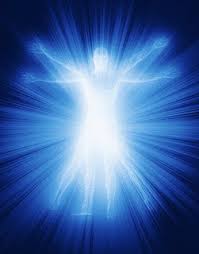 (Concluded from Part 1, yesterday.)
(Concluded from Part 1, yesterday.)
If we bring that knowledge now down to the personal, if we narrow the range of the microscope again to the individual … well, me … then what I want to do (and for you it may be different) is to remove the obstacles to feeling wonderful in my life.
As I begin to consider that work, I take an inventory. I see what I have in my toolbox.
(1) I know that my Self is innocent and pure rather than sinful and tarnished
(2) I know that, behind the scenes, the universe is benevolent and bent to help me be successful.
(3) I know that I can do this if I focus my attention and invoke my will fully.
So I’m not a broken being repairing itself but a fully-capable light warrior breaking his chains.
And we’re all doing this. You hear different channels use different terms for cleansing ourselves of our vasanas. But they’re all saying, let go of your issues; divest yourself of your resentments; leave your arguments behind.
Some call them core issues. Some call them old baggage, etc. But it’s all the same: we’re cleansing ourselves of our old programs, buried deep in our memories and surfacing as dysfunctional behavior patterns.
We’re emerging from them, in part through our own efforts and in part through the impact of the Mother’s tsunami of love.
The only troublesome vasanas are the ones that don’t work or harm others. A vasana of charitableness, providing it’s not dysfunctional, isn’t harmful.
Ramana says that the toxic vasanas don’t survive Sahaja Samadhi, which we call Ascension. But apparently the good vasanas do. They don’t violate our soul’s design and so can come with us. (1)
So in terms of processing (or cleansing myself of) vasanas, I think I’m on the right track there. But the behavior patterns born of vasanas are independent. They require reparenting, re-education, and retraining. But that also is in process.
And like everything else the cleansing fire that Ascension is will burn the seeds of future action (our vasanas) to a crisp. (2)
What we’re doing now simply gets us there quicker, allows us to feel better sooner, and increases the range of our Ascension later. (3)
Footnotes
(1) “Vasanas which do not obstruct Self-Realization remain [after Self-Realization]. In Yoga Vasistha two classes of vasanas are distinguished: those of enjoyment and those of bondage. The former remain even after Mukti [liberation, Ascension, beyond Brahmajnana] is attained, but the latter are destroyed by it. Attachment is the cause of binding vasanas, but enjoyment without attachment does not bind and continues even in Sahaja.” (Ramana Maharshi in S.S. Cohen, Guru Ramana. Memories and Notes. 6th edition. Tiruvannamalai: Sri Ramanasramam, 1993, 89.)
(2) “The flame of illumination … is kindled by discrimination between Atman [Self] and non-Atman [i.e., Self-Realizaion]. [It] will burn away the effects of ignorance [i.e., the vasanas], down to their very roots.” (Shankara in Swami Prabhavananda and Christopher lsherwood, Shankara’s Crest-Jewel of Discrimination. Hollywood: Vedanta Press, 1975; c1947, 39.)
(3) Landing on the Fifth? Sixth? Seventh?

